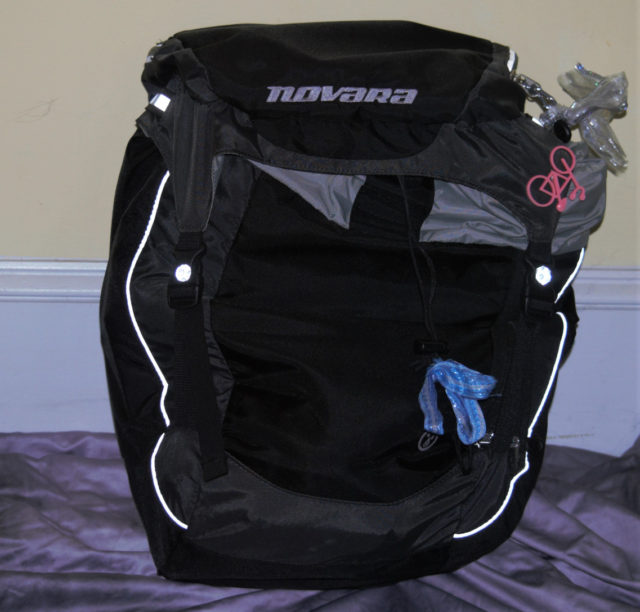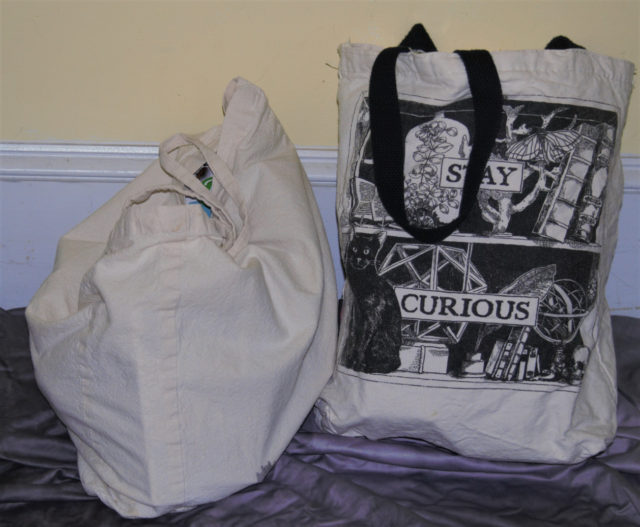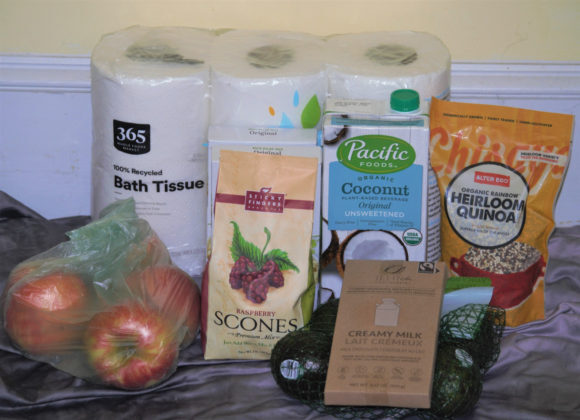There are many resources out there giving suggestions for different levels of climate action, but the one that Real Hartford will be promoting for the next two months saves you money, makes you healthier, allows for opportunities to socialize, and puts you in tune with nature, all while reducing your carbon footprint. As far as individual actions go, it is the second most impactful thing you can do. Many people say they want to do it, but then don’t. This series will provide guidance and answer questions so that those who want to do meaningful work in healing the planet can begin living their values through choosing to be car-free or car-lite.
Once you’re identified as someone who has (99.9%) opted out of the American love affair with cars, people tell you things. They confide in you about their darkest secrets: they hate driving or they hate maintaining the car or they worry constantly about getting killed in a crash or they resent “having to” have a car at all. They have not committed to change, but they’ve taken the first step which is acknowledging that they are dissatisfied with something they have been told, possibly since birth, that they are supposed to want.
Folks who get this far — identifying emotions that seemingly go against all norms — may not ever align their actions with their feelings or values. Why?
Feeding oneself seems to be the first hurdle, and one that few bother trying to clear. Let’s get some clarity on this.
First of all, the Covid pandemic should have added a whole lot of light on one option: grocery delivery. This gets expensive, and there are definitely other downsides…but there are people who are car-free, have not stepped foot in a grocery store in years, and do just fine because they subscribe to a service that brings them everything they need. The drawbacks: cost, trusting someone else to pick out produce on your behalf, and needing to be around for the delivery (or, risk food sitting outdoors. . . which is not the same as leaving a package on the stoop because one of the two may attract animals). For third party services — i.e. someone is shopping who is not a store employee — you also run the risk of people claiming the store was out of something when they really could not locate it. The benefits: if you despise grocery shopping or have a tight schedule, the cost can absolutely be worth it; and obviously, not having to schlep bags of heavy items, like canned goods, soda, ice cream, laundry detergent, cat food. Those with physical mobility issues, like a broken leg, also benefit.
We need to stop looking for silver bullets though. The reality is that there is no single method that provides everything for most people. Another possibility is to occasionally have grocery delivery for lots of heavy stuff — laundry detergent, pet food, etc. — rather than make this a weekly or biweekly routine.
So, that’s one option.
Another? Occasionally borrow a car or tag along with a friend. Sure, get a normal week’s worth of groceries then, but use this occasion wisely: to stock up on non-perishable items. I’ll confess to being a bit judgy in March 2020 when there were these panics over toilet paper, and that’s because I’ve always gotten the super-duper-family pack of toilet paper– even when I had a car. It seemed silly to buy a smaller quantity weekly when I could bring home what could last three-to-six months. Yes, you have to have the space for storage, but I would argue that this is possible even in an efficiency apartment because it comes down to what we value. I value not running out of toilet paper, and I am not yet ready to investigate a bidet. Anyway, this monthly or quarterly or annual excursion is when you gather the basics, whatever those are for you: oats, lentils, couscous, quinoa, pasta, olive oil, dried fruits, whatever. While you are out, are there other errands? A few times a year I rent a car, primarily to travel to places where public transportation does not exist. I always work into this daycation some unsexy stops for bulky items. It’s about being intentional with how we use our resources.
If you need some inspiration, reread the Little House on the Prairie books to be reminded of a time when only a couple times a year, someone might go into town to buy certain supplies.
There’s this weird thing that happened last century. In a sense, it’s understandable. After spending all our time in the kitchen, women were given the opportunity to use our time in other ways — freed up by convenience foods. On the one hand, hurrah. On the other, do “just add milk” and “remove film, microwave for four minutes” truly provide convenience? Do the math to see how much more time one needs to spend on the clock to afford these conveniences. Maybe they’re worth it to you, maybe not. Should nourishing our bodies be, on a routine basis, something we rush, something we try to put as little thought into as possible? We know the answer for those who eat while working at their desks, but for those seeking some quality of life…
Our (fairly recent) beliefs about convenience have really eroded the foundation of society: that foundation being, of course, the planet.
Grocery shopping when you are car-free is not inconvenient once you reframe and retrain yourself. You don’t “have to” do this. You get to buy food for yourself, your family. You get to choose. That’s a gift. If you are interested in learning about true inconvenience, look at the options for those who rely on food pantries. Unlike a grocery store that is open at least twelve hours every single day, a food pantry typically operates for two or three hours, often at times when most people are working, and may not be on the same side of town anyway. It always helps to get perspective. Those expecting convenience reveal their economic privilege and would do well to become allies, advocating to improve what is truly inconvenient.
Aside from delivery services and bumming a ride from a friend every few months, what is there?
Stopping off at stores or farmers’ markets more frequently, maybe twice a week, for fresh fruit, vegetables, bread, and dairy. . . along with that other thing you’ve been craving. These are not long excursions. It can be five or ten minutes, in and out. That does not apply at the farmers’ market, where you run into everyone you’ve ever met and end up socializing for three hours, but otherwise, same concept. You already have lentils at home from that larger grocery run; now you’re supplementing with potatoes and carrots, or whatever. But you don’t need to get every ingredient for a dish at once if you prepare. Keep the basics stocked and refresh the supplemental goods regularly.
For this, unfuck your belief about what a grocery store looks like. It does not need to be some full service monolith. That might work for those quarterly errands, but on a weekly basis, why?! At what point did we decide we needed a bank and pharmacy inside the grocery store? We don’t. Not if the area we are in is walkable.
Here’s a little map showing Hartford markets where produce is consistently available. There are probably places that could be added that I did not realize sold fresh fruits and vegetables, and there are definitely a few places that were intentionally omitted because their fruits and vegetables are not fresh. (We can talk about the self-perpetuating problem of this in downtown Hartford another time, how people who live downtown shop outside of downtown, making it impossible for markets to thrive until that mindset changes)
BUT HOW DO YOU GET GROCERIES HOME ON FOOT OR BUS OR BIKE?!
For people using bicycle or tricycle: baskets, panniers (saddlebags), strapped to the back rack, and/or in a backpack or messenger bag are most likely how you’ll do this. If your typical grocery trip amounts to two or three bags, this should not be a major transition.
You’ll want to aim for an even distribution of weight. It will take longer to brake with a heavier load.
The stuff seen in the top photo of this post (six rolls of toilet paper, two boxes of rice, one package of quinoa, bag of apples, bag of avocados, container of coconut milk, scone mix, and chocolate bar [with one square missing]) fits into one pannier:

Typically, what I will do is take a load like that but divide between the two bags and have a few other items like loaves of bread and greens. There’s still room left for flat repair kit, lock, and bottle of water.
For people using bus or just walking, some combination of reusable bags (not crap single-use paper or plastic that will rip open on you, besides being wasteful) and/or a collapsible cart. A backpack and a couple tote bags works fine, and now that Connecticut has finally banned single-use plastic bags, you won’t immediately stand out for having reusable bags.
This is the same pictured grocery load split over two bags:

Here is the biggest change you may make if walking or cycling to the grocery store: grab the basket, not the cart, when you go into the supermarket. Unless you are especially strong, into weight training, or have a cart of your own, you want to know what kind of load you are creating for yourself.
Regardless of the scenario, I find it easiest to bag my own groceries so that I am not reorganizing everything due to an employee not understanding that I’m carrying/hauling my items a lot farther than to a car in the parking lot and then from a parking lot into my house.
Unexpected Perks of Grocery Shopping While Car-Free (AKA But Wait, There’s More!)
- Not ever needing to brave the madness that is trying to park in the Whole Foods parking lot
- Generally not needing to walk through the grocery store parking lot
- Bicycle parking, for the places that have it, tends to be right in front of the building.
- Soda and ice cream are heavy. If you don’t like exertion, you might begin making healthier choices.
- Likewise, having much more limited space in bags. Better for budget.
- But also, walking or cycling to store helps justify some treats.
- On the other hand, depending on where you’re schlepping groceries home from, ice cream might melt before you get it there. This may return to being a special treat out instead of something you have stocked in your freezer. There are special bags that keep groceries cold, and I only bring mine when I am being intentional about getting frozen items so that I generally discourage myself from coming home with more Ben & Jerry’s.
- The knowledge that people spend money on “challenge competitions” that involve weighted backpacks, but you get to do this regularly with potatoes, coconut milk, and cat food.
What questions do you still have about how to do grocery shopping while being car-free in Greater Hartford?


Richard
“It’s about being intentional with how we use our resources.”
Wonderful article. Having been car free all of my life, now 73 finally someone is celebrating this very idea. I have never had a problem with no car. I have been to almost all 50 states, Canada, Mexico. I have lived in big cities, small towns and 10 miles outside of town up in the Catskill mountains. I have a fold up shopping cart and walk to the store. Winter is hard but so what. Pretend you are back in the day and get going. Just one look at my waistline will tell anyone that I am not food scarce. I have different stores that I like to frequent. Its nice to get out. When I go on the bus I bring my bags, been using my own for so many years, before they became popular, my goodness I feel avant garde, and my backpack is filled with a bottle of bleach, detergent, and other heavy items. I find it easier to carry heavies that way. I generally take two bags and then if not using my cart come home on the bus.
Sure, it’s a walk where I live now and I wish I could fly but go along, sing a song, make up a story and soon I will be home. Anyone who complains about the bus service in Hartford should try the buses in other cities Hartford’s size or smaller. Hartford’s system is the number one. How do we know this? We did a study of New London, Montpelier, Burlington, Brattleboro, Springfield, and other places when we were planning to move out. A real study not just look it up. We went there, took the bus, all over and then some. When we lived in Hartford there were the 33,31,63, 69, a walk up to Farmington Ave, and the fast track. Tell me where you want to go? Of course, a no car life has its disadvantages, one can not just plunk ourselves down living anywhere without a study of the area, but don’t worry you will get use to it with effort, research, planning, and forward thinking. To stop being so needful is great.
One last word. I hate cars. Cars are my number one dislike after Capitalism, war mongers, and mosquitos. I try hard now-a-days to not let it get the best of me, but every time I see one I want to throw a rock.
Jane
Huzzah! I am partially car free. My husband and I share a car and so I am usually carless all week but have the luxury of using the car on weekends. I do all the shopping. We usually make a big grocery pickup about once a month when I get non perishables and harder to get stuff. In between we order a weekly delivery from a farm which brings seasonal produce and also dairy, eggs, meat etc. It’s more expensive for some things but less for others, and it makes me waste so much less money of food I *might* cook and instead helps me buy what I’ll use (and support local farmers). For everything else I go to our small downtown market, the farmers market and maybe even the gas station on the corner if it’s late and the ice cream craving is really bad. Pet food I buy downtown (where I live), which brings me to the one thing you left out (at least for my situation). The shopping cart! If I know I’ll be buying more than a couple of things and my shoulders will be aching before I get home I just take along my wheeled cart. It’s so easy to use and makes buying heavy things (like the 35lb bag of dog food I get cause it’s cheaper than buying the small bags) a piece of cake. I also use it for other errands like taking holiday packages to the PO.
(For toilet paper I buy the plastic-free stuff online but we also use cloth for nose tissues and pee which is a Whole Other Blog Post but seriously we do not go through a lot of TP, it lasts forever).